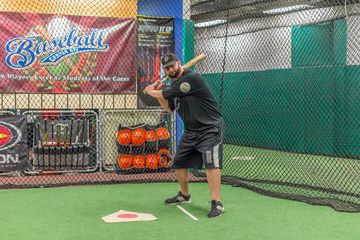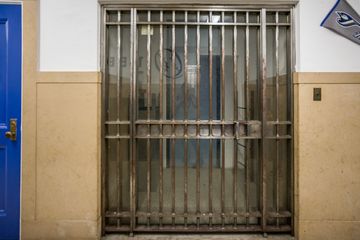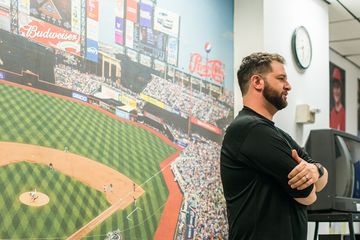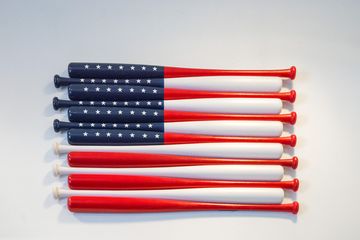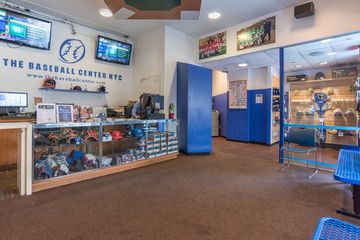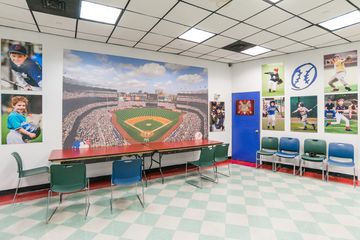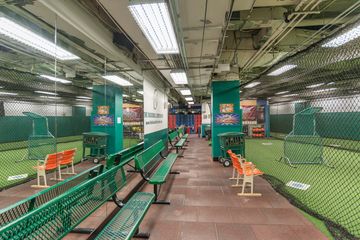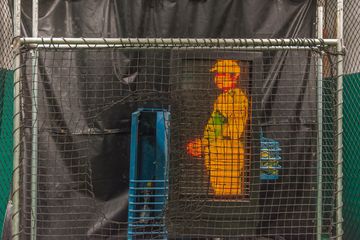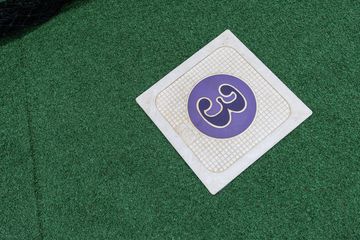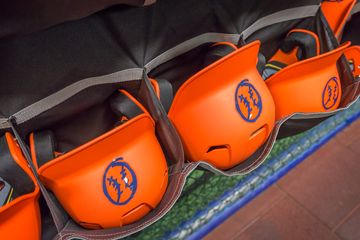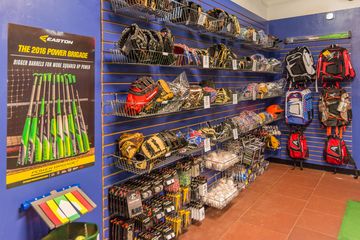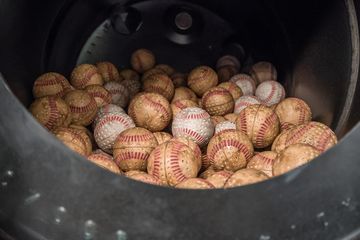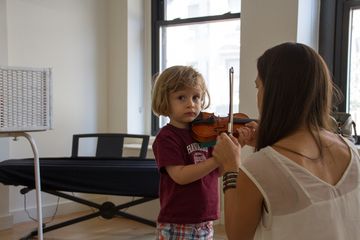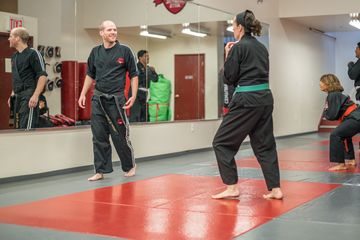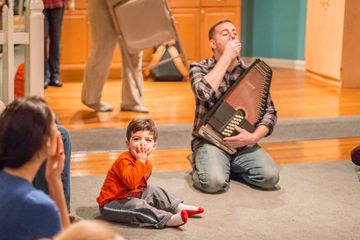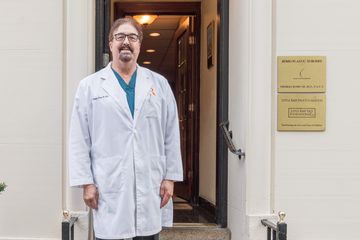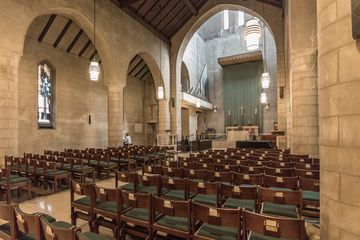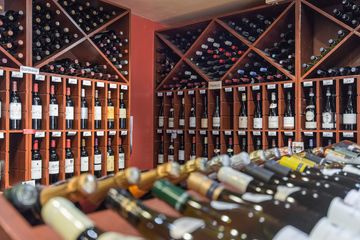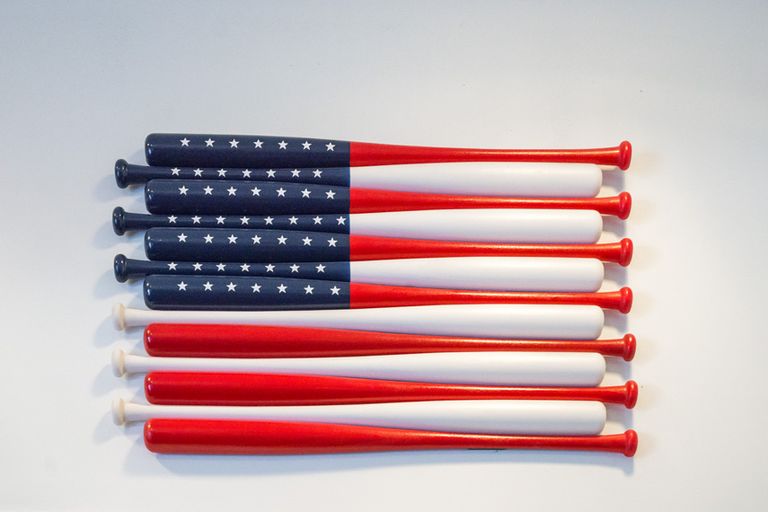
Coach Jellybean, a man who was only introduced to us by his universally-used nickname, has endless good humor. He told us, "I am world famous on the Upper West Side among kids aged nine to twelve." He added with a cheeky smile, "I'm a big deal." He is often spotted on the street or at the zoo by gaping mouthed kids who are shocked to see their coach outside his natural habitat. It is not surprising that he is recognized so frequently, since two to three hundred kids go through the batting cages each week. It is, after all, the only place in Manhattan with an indoor facility.
Jellybean took us past the large bank vaults that are a permanent part of the Apple Bank basement and into the Green and Blue rooms chatting enthusiastically. The Center can host six different classes at the same time, thanks to its size and equipment. It has every kind of pitching mechanism one can imagine, from a big ancient beast that is still "one of the best machines in the business" despite its age, to an LED display that lights up to resemble an actual pitcher. There are even simulators that can show where the ball would end up going in Yankee Stadium (with handicaps for younger batters). Not only does it motivate kids with a little firework display for home runs, but it also serves as a helpful statistical tool for older players hoping to improve their technique. One of the most impressive machines was the "pro-hitter" which can shoot out balls at 100mph and can basically mimic any kind of major league pitch. Jellybean also showed us the party room, which was decorated on one side for the Mets and on the other for the Yankees, in an effort to appeal to fans of both teams.
As I was admiring the countless photographs of kids that lined the hallways, Jellybean pointed out that the center is not just for children. Far from it: the facilities have been used for bachelor parties, special needs adults, and even "big league guys" who want a place to practice in between seasons. The Center is also popular among foreign tour groups who want to try out America's pastime while visiting New York. Jellybean was particularly proud of the charity events that the Center hosts, where people pledge money for hitting pitches at a certain speed.
After our tour, I took the time to speak with Jason, who told me more about the programs that the Center offers. There are tournament teams, after school programs, summer camps, and birthday parties, weekly classes, and, during the warmer months, outdoor leagues. He explained that the space's main purpose is to "Promote the experience of baseball." When I asked how the Baseball Center accomplishes its mission, he replied without hesitating: "the coaches." Some of the coaches played in college, some are former professionals, and some are still playing, but what binds them all together is their love of the game and their ability as teachers. "A good player doesn't always make a good coach," Jason admitted, and assured me that each of his coaches is thoroughly trained as a teacher. With a grin, he told me that a mother had recently said to him, "I don't think I've ever seen so many men who are good with children." With pride, Jason pointed out the sign that marked the Baseball Center as a designated New York City "safe house."
Though Jason has seen some real baseball stars come through the Center's programs - including Clayton Kershaw of the LA Dodgers - he was pleased to tell me of a child who had been coming for years, and had recently been offered a full ride to Stanford via baseball. He went on to say that he enjoys seeing every child thrive, no matter what level they ultimately achieve. He told me that his favorite part about working at the Baseball Center are those happy moments when he witnesses a child get their very first hit. "It's magic," he gushed. It is a personal victory not just for the child, but for everyone at the Center. "We are a part of each child's team."
